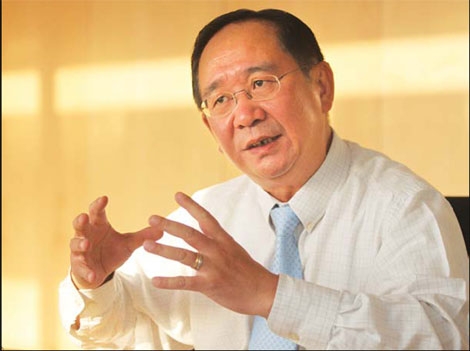Economy
Cutting edge of 4G standard
Updated: 2010-12-10 11:10
By Andrew Moody and Yan Yiqi (China Daily European Weekly)

Erik Feng says China is now at the vanguard of mobile communications. Liu Zhe / China Daily
A major area in which China has played a leading role has been in the development of 4G, the new mobile phone network standard. 4G will allow higher quality and faster speed video and television pictures to be sent via mobile devices.
China has developed one of six international benchmark standards for this latest communications technology.
Erik Feng, executive vice-president of China and North East Asia for Swedish telecommunications giant Ericsson, based in Beijing, says China is now at the vanguard of mobile communications.
"China has become a leader in 4G because of its early involvement in the standardization process. It has taken a long time for them to accumulate the innovations and the IPRs (Intellectual Property Rights)," he says.
"The innovation has been driven by the government which has identified telecommunications as a key industry."
China's 4G standard - TD-LTE - was recently demonstrated at the Shanghai Expo and is seen as the platform on which to develop a dominant position.
"I think China will lead a revolution in telecommunications over the next 10 to 15 years," Feng says.
Ericsson, which has 27 offices and nine wholly owned companies in China, is a European company which is likely to have a key role in supporting Chinese operators developing 4G networks when the licenses are issued.
Feng insists China no longer relies on collaborating with European and international companies to make technological breakthroughs.
"We work closely with Chinese bodies. We work together and contribute our knowledge. We do not say help, however, because China does not need our help. It is more of cooperation."
Ericsson has 11,500 employees and a research and development base, which develops technology for the company worldwide.
"It is one of our key research and development centers and most of the people working there are Chinese and educated in China. The competence level is very high."
One of the major uses of mobile communications in China will be the "Internet of Things" (IoT), which allows machines to talk to each other.
China's major IoT research center was established in Wuxi in Jiangsu province in November last year.
Sensor devices will be able to gather data and other information and communicate it via mobile phone networks.
Major applications are traffic management, power generation, intelligent buildings (checking on such aspects as energy usage) and in healthcare.
"How many people will there be in the world by 2020? If there are 7 billion and they all have seven devices, allowing for some people to have 20 in the cities, you will have 50 billion connected devices. It will be a very major development and China will be at the forefront of it."
E-paper

Ear We Go
China and the world set to embrace the merciful, peaceful year of rabbit
Preview of the coming issue
Carrefour finds the going tough in China
Maid to Order
Specials

Mysteries written in blood
Historical records and Caucasian features of locals suggest link with Roman Empire.

Winning Charm
Coastal Yantai banks on little things that matter to grow

New rules to hit property market
The State Council launched a new round of measures to rein in property prices.
